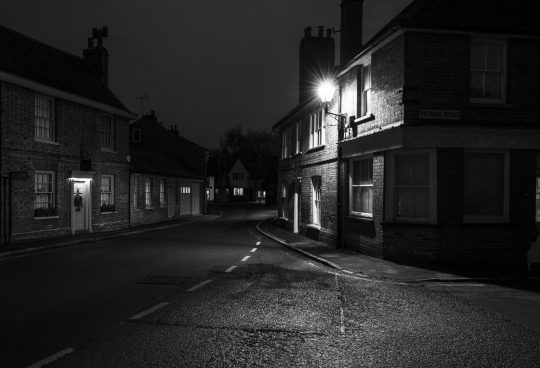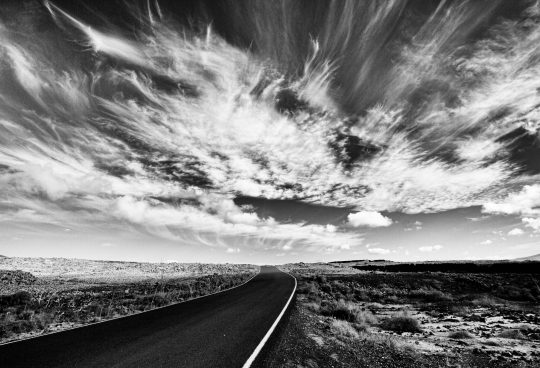‘at every level,and within every context the portrait photgraphy is fraught with ambiguity’-Graham clarke The Portrait in Photgraphy
The most difficult thing for me is a portrait. You have to try and put your camera between the skin of a person and his shirt.-Henri Cartier-Bresson
“A photographic portrait is a picture of someone who knows he is being photographed.”
– Richard Avedon
“A portrait isn’t a fact but an opinion – an occasion rather than a truth.”-Richard Avedon
A good portrait ought to tell something of the subject’s past and suggest something of his future.-Bill Brandt
To see people as they are, as they imagine themselves, as they wish to be. To be witness, the friend, the judge, the accomplice. To record their moment. -Annie Leibovitz
When I have had such men before my camera my whole soul has endeavoured to do its duty towards them in recording faithfully the greatness of the inner as well as the features of the outer man. The photograph thus taken has been almost the embodiment of a prayer.-Julia Margaret Cameron
Portraiture has always had a degree of propaganda about it. From the pre-photography days when portraits were the domain of the wealthy, they served to create a fiction about the sitter, usually his (sometimes her) greatness or some achievement with a dose of symbolism to send a message or two. Posing for posterity played a part, and the artist had the creative freedom to create a likeness and fiction. Today a select amount of portraits are to be seen in galleries around the world, giving them added significance (and value!), and reminding us of bygone ages.
Although some artists had begun to create scale for their imagery (Van Dyke’s woodcuts), the invention of photography in 1826, and subsequent improvements in development processes and times, democratised image-making on a global scale, and soon people from all classes could have their portraits done. However,it brought with it a “a great deal of historical baggage and no small amount of confusion and conested meanings” (ewing p.14), some saw it as a perfection of the portrait while others bemoaned its creative latitude with many simply conforming to to social types, resulting in photographic stereotypes.
Over the decades since its invention, photography has had its schools of thought and practice and all have contributed to the practice of portraiture. Today, with social media and technological advances in image-making, portraiture is more ubiquitous than ever. We are bombarded with saturation coverage of celebrities, their lifestyles and looks, as well as the ubiquitous ‘selfie’ with its language of poses and pouts, or as Wim Winders calls ‘faux-photgraphy’.
Notable Practitioners
Julia Margaret Cameron
Julia Margaret Cameron (née Pattle; 11 June 1815 – 26 January 1879) was a British photographer who is considered one of the most important portraitists of the 19th century. She is known for her soft-focus close-ups of famous Victorian men and women, for illustrative images depicting characters from mythology, Christianity, and literature, and for sensitive portraits of men, women and children.
After establishing herself first among Calcutta’s Anglo-Indian upper-class and then among London’s cultural elite, Cameron formed her own salon frequented by distinguished Victorians at the seaside village of Freshwater, Isle of Wight.
After showing a keen interest in photography for many years, Cameron took up the practice at the relatively late age of 48, after her daughter gave her a camera as a present. She quickly produced a large body of work capturing the genius, beauty, and innocence of the men, women, and children who visited her studio at Freshwater, and created unique allegorical images inspired by tableaux vivants, theatre, 15th-century Italian painters, and the work of her creative contemporaries. Her photography career was short but productive; she made around 900 photographs over a 12-year period.
Cameron’s work was contentious in her own time. Critics derided her softly focused and unrefined images, and considered her illustrative photographs amateurish and hammy. However, her portraits of respected men (such as Henry Taylor, Charles Darwin, and Sir John Herschel) have been consistently praised, both in her own life and in reviews of her work since. Her images have been described as “extraordinarily powerful” and “wholly original”,[2] and she has been credited with producing the first close-ups in the history of the medium. Wikipedia
https://www.vam.ac.uk/collections/julia-margaret-cameron
August Sander
August Sander was a German portrait and documentary photographer. His first book Face of our Time was published in 1929. Sander has been described as “the most important German portrait photographer of the early twentieth century”. Wikipedia
“The ambition and reach of People of the 20th Century (both in terms of the quality of his photography and in his representation of a cross-section of society) made him a monumental figure of twentieth century photography. The likes of American social realist photographers such as Walker Evans and Dorothea Lange (whose works became iconic symbols of the depression), and later photographers such as Diane Arbus, each owe a debt to the trailblazing Sander. More recently, the work of conceptual artists such as Bernd and Hilla Becher (known for their typologies of industrial buildings and structures) and Rineke Dijkstra, whose photography is infused with psychological depth and social awareness, resonates with the influence of August Sander’s career-long project.”
https://www.tate.org.uk/art/artists/august-sander-5319/five-things-know-august-sander
Angus McBean
Angus Rowland McBean (8 June 1904 – 9 June 1990)[1] was a Welsh photographer, set designer and cult figure associated with surrealism.The artist McBean, as he was still known as a mask maker, gained a commission in 1936 from Ivor Novello for masks for his play “The Happy Hypocrite”. Novello was so impressed with McBean’s romantic photographs that he commissioned him to take a set of production photographs as well, including young actress Vivien Leigh. The results, taken on stage with McBean’s idiosyncratic lighting, instantly replaced the set already made by the long-established but stolid Stage Photo Company. McBean had a new career and a photographic leading lady: he was to photograph Vivien Leigh on stage and in the studio for almost every performance she gave until her death thirty years later. wikipedia
McBeans reputation was always bigger than his fame, especially when compared to Cecil Beaton and David Bailey. However, it has been argued his work was better technically and artistically with Lord Snowden calling him “a genius” and Cecil Beaton “the best photographer in the country”.
Samual Fasso
“In all my works I am both character and director. I don’t put myself in the photographs. My work is based on specific situations and people I am familiar with, things that I desire and things that I draw up in my imagination and which, then, I interpret. I borrow an identity.” – Samuel Fosso
Fosso was born in Kumba, Cameroon in 1962, although his Nigerian parents moved him to their hometown of Afikpo shortly after, and then, in the late 1960s, following the outbreak of the Nigerian civil war, he was sent to live with an uncle in Bangui, the capital of the Central African Republic. It was here he was introduced to the medium, apprenticing for five months with a local photographer, an experience that subsequently encouraged him to open his own studio in 1975, then aged just 13.
During this period he predominantly captured staged portraits of local people, motivated primarily by the financial rewards rather than a deep interest in the creative potential of the medium. However, at the end of each day, he would take a series of self-portraits, both to finish the roll of film, and also capture mementos that he would send to his Grandmother in Nigeria.
In 2015, Fosso created perhaps his most strikingly introspective work SIXSIXSIX. Comprising 666, polaroid self-portraits, his trademark costumes, and intricate backdrops are relinquished in favor of a single austere environment, in order to embody the essence of self-portraiture.
A profoundly-compelling study of the human condition, and a testament to his exceptional artistry, each image conveys a unique set of emotions, inspired by Fosso’s often tumultuous life experiences: from his early childhood illness to the conflicts that twice forced him to flee his home. In 2012, he was forced to flee Bangui for Paris after war broke out in the Central African Republic, during which his home, studio, and photographic equipment were destroyed.
https://independent-photo.com/news/samuel-fosso/
Philippe Halsman
Philippe Halsman was one of the first great portrait photographers to inject a sense of fun into his work. He had close connections to surrealist artists and was a long-time collaborator with Salvador Dali.
His portraits are joyful and exuberant. His subjects are often snapped in mid-air as they jump and dance before the camera. But despite the humor, there’s always a personal warmth to his images. His portrait photos are uniquely personal.https://expertphotography.com/portrait-photographers/
As well as Salvador Dali, prominent subjects include Albert Einstein, Marilyn Monroe, and Muhammad Ali. His skill behind the camera also led to a career as a fashion photographer.
Yousuf Karsh
Yousuf Karsh is undoubtedly one of the greatest portrait photographers of all time. You may not be familiar with his name, but you’ve probably seen a few of his portraits.
His name reached global acclaim with his stunning portrait of Winston Churchill in 1941. He went on to photograph some of the most iconic individuals of the 20th Century. These include Dr. Martin Luther King Jr, Muhammad Ali, and Nikita Khrushchev.
His style is clean and classy. The portraits are posed and deliberate. But they all pack a punch of personality and charm. Most modern portrait photographers owe a debt to Yousuf Karsh.https://expertphotography.com/portrait-photographers/
Jialin Yan
Born in 1992, Fuzhou, China. Currently lives and works in Fuzhou, China. 2016, graduated from Newcastle University, UK, majoring in International Financial Analysis. Her photography mainly revolve around the lost memories and emotions of individuals and groups, and tries to explore the process of memory abandonment through image taking. She is a Photographer / Curator / Magazine Arcticle Contributor/Co-founder of Chinese female photography promotion platform 「Miroir Project」.https://www.jialinyan.com/personal
Dawoud Bey
Dawoud Bey is an American photographer and educator known for his large-scale art photography and street photography portraits, including American adolescents in relation to their community, and other often marginalized subjects. Wikipedia
Noteworthy Articles
There’s Less to Portraits Than Meets the Eye, and More
https://www.nytimes.com/2018/08/23/magazine/theres-less-to-portraits-than-meets-the-eye-and-more.html
46 Famous Portrait Photographers You Should Know https://expertphotography.com/portrait-photographers/
A History of Portrait Photography, Part I https://www.blind-magazine.com/en/lab/a-history-of-portrait-photography-part-i/
A History of Portrait Photography, Part II https://www.blind-magazine.com/en/lab/a-history-of-portrait-photography-part-ii/



